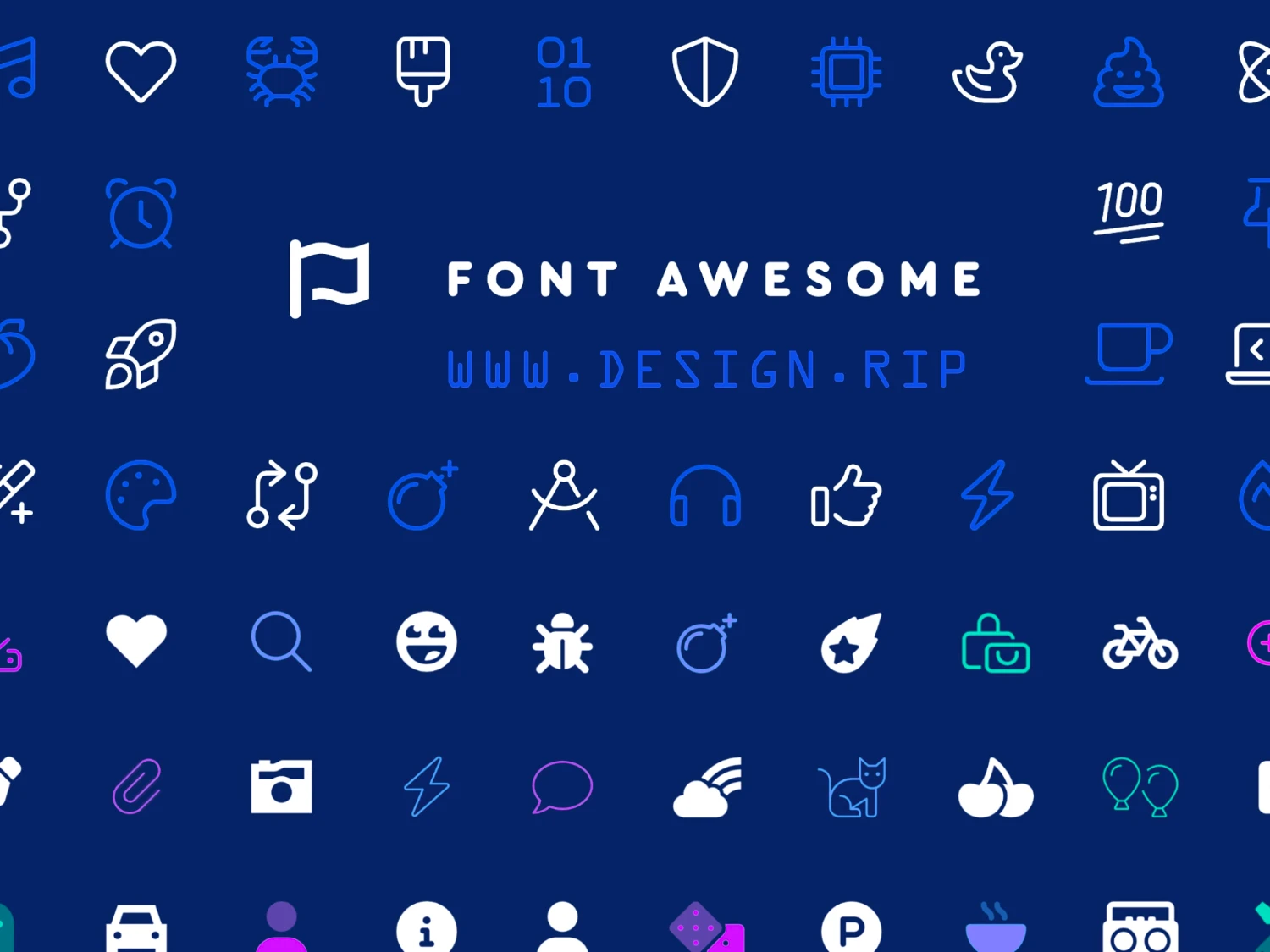What Is Lottie? A Beginner's Guide to the Lottie Format
Lottie has emerged as a widely supported and appreciated format across the whole design industry. In this comprehensive beginner’s guide, you will explore how Lottie came to be, how it smoothly fits into different platforms, and why it's so awesome. We'll break down the perks, compare it with other formats, and throw in some fun examples.
Lottie has emerged as a widely supported and appreciated format across the whole design industry. In this comprehensive beginner’s guide, you will explore how Lottie came to be, how it smoothly fits into different platforms, and why it's so awesome. We'll break down the perks, compare it with other formats, and throw in some fun examples.
Table of Contents:
- What is Lottie?
- What’s the history of the Lottie format?
- What makes Lottie files so popular?
- Which platforms support Lottie?
- What are the main benefits of Lottie?
- Why use Lottie animations?
- What are the differences between Lottie and other image formats?
- What are the disadvantages of Lottie?
- What use cases does Lottie have?
- Examples of Lottie animations
- How to implement Lottie files?
- Useful resources about Lottie
- Final Thoughts
What is Lottie?
What’s the history of the Lottie format?
Lottie’s history dates back to 2015 when Hernan Torrisi released a plugin named Bodymovin. This plugin exported animations made in Adobe After Effects as JSON files, rendering them at runtime. Before this invention, there were limited options for implementation, and the whole integration process was poor.
Motion designers passed their animations to the developers who had two options:
- They could either export low-quality animations.
- Try to reproduce them from scratch, using their coding skills.
Unfortunately, this resulted in suboptimal animations :(
In the same year, LottieFiles was launched. This was a dynamic platform that allowed animators and developers to showcase, test, and share their animations.
In the next few years, several companies created libraries for rendering Lottie, for example, Windows and .NET Foundation. In this way, Lottie became a widely supported and frequently used format that bridged the gap between motion graphic design and web/app development.
In 2020, dotLottie was created, providing an open-source file format that compresses one or more Lottie files into a single file.
It was also recently announced that there's a coordinated effort in progress to make Lottie into an open file format. Check out the article below for more information.

What makes Lottie files so popular?
Which platforms support Lottie?
Lottie is supported by Android, iOS, Windows, and by the web:
- Its native support for Android and iOS lets developers easily integrate engaging and captivating animations for their mobile applications. The cross-platform compatibility ensures consistent user experience on various devices.
- Lottie is also a popular format in web development because the animations can be directly embedded into the web pages, and they are also interactive. Windows-based applications can integrate Lottie too, making it a valuable asset in software creation.
What are the main benefits of Lottie?
The main benefits of Lottie as a file format are the following:
- Compact file size
- Infinite scalability
- Multi-platform compatibility
- Flexibility
- Collaborative potential
Lottie bridges the gap between motion graphic designers and developers, speeding up the web development process. Lottie’s library renders animations in real-time and can be easily modified without having to re-export the entire animation. It also supports interactivity, providing an engaging user experience and improving user retention.
The main benefits of Lottie animations are detailed in the below table:
Small file size ?
Vector-based ♾️
Multi-platform support ?
Interactivity ?
Lottie animations are an efficient solution for web and mobile applications due to their compact file size. They load faster than other, heavier animation formats, and they take up less storage space.
Lottie animations are infinitely scalable, which makes them ideal to be displayed on various devices and screen sizes without losing quality and resolution.
Another advantage of Lottie’s libraries is that they can be easily integrated into various platforms such as iOS, Android, web, and React Native. This feature significantly reduces development time and simplifies the whole process.
Lottie animations support interactivity, so they can be triggered on scroll, click, and hover. They offer a dynamic and engaging way to enhance user experiences on websites and applications.
Another advantage of Lottie’s libraries is that they can be easily integrated into various platforms such as iOS, Android, web, and React Native. This feature significantly reduces development time and simplifies the whole process.
Why use Lottie animations?
Here are 5 reasons for using Lottie:
1. It is widely supported
Lottie animations can be played anywhere because they are compatible with all modern browsers that support Javascript. Libraries are also accessible for mobile applications and the majority are rapidly embracing Lottie animations to enhance their user interface.
2. A Lottie file is plain text
Lottie animations are easy to maintain because they are saved as human-readable plain text. This reduces debugging time and overall deployment duration. Moreover, they do not require any special software for adjustments. Lottie animations are formatted as JSON, allowing seamless integration into JavaScript or any other application development environments.
3. It is dynamic and scalable
Lottie stands out as the most dynamic animated graphics format in use today. Its JSON structure makes it easy to manipulate and replace various levels of details. Furthermore, Lottie minimizes storage and loading times.
4. It has great quality
Lottie is a vector-based format, which means that it looks good on any screen and won’t get pixelated no matter how much you scale it. The rendering will always be done at the screen’s native resolution.
5. It’s smaller than other formats
Lottie animations can be 600% smaller than other image formats, such as MP4 and GIF while retaining the same quality. In general, they are 50% smaller than an average PNG, and they can be optimized for an even smaller footprint.
What are the differences between Lottie and other image formats?
There are significant differences between Lottie and other image formats regarding aspects such as size, quality, and color accuracy. Overall, we can claim that Lottie is taking over the animation market for web, Android, and iOS because it's the best solution.
Below, you can find a short comparison of the strengths and weaknesses of each wide-spread image format:
Lottie vs PNG (PNG sequence)
Below is a table comparing Lottie files and PNG files:
Lottie
PNG (PNG sequence)
Vector-based graphics, infinitely scalable
Raster-based graphics, made up of a fixed number of pixels
50% smaller than an average PNG
Tend to be large due to lossless compression
Easy to animate and edit
More difficult to animate and apply changes later
Can be easily integrated into applications using libraries
PNG sequence implementation involves several additional steps and more coding
Lottie files take less disk space resulting in faster loading times
PNG sequence will make your page load slower
Supports interactivity
Doesn’t support user interactions
Lottie vs GIF
Below is a table comparing Lottie files and GIF files:
Lottie
GIF
Vector-based graphics, infinitely scalable
Raster-based animation files, made up of a fixed number of pixels
Can be 600% smaller than a GIF, and it’s faster, too
Large file size, slower load times
Supports looping, playback, speed control, and layer properties
Loops continuously, so there’s no opportunity to pause it
Flexible, easy to customize
Impossible to make changes once it’s done
Supports transparency and interactivity
Doesn’t support transparency and interactivity
What are the disadvantages of Lottie?
Lottie has received mainly positive responses in the design and development industry. Of course, there are a few limitations and shortcomings.
Adding extra keyframes to your animation can result in a larger file size, so during the creation process, you should pay attention to every aspect in order to get a lightweight Lottie file at the end. You should avoid using presets like Wiggler and Autotrace and animating along a path because these can add useless lines of code to your Lottie file.
If you want to learn more about the limitations, you can check this Lottie supported features table.
What use cases does Lottie have?
There are countless creative use cases for Lottie animations in mobile applications and websites, some of them being the following:
- Presentations slides
- Social media posts
- Animated icons and buttons
- Loading animations
- Onboarding tutorials
- Background animations
- In-app animations
- Animated website illustrations
- Stickers
- Infographics
- Gaming assets
- Ads
Using Lottie animations can increase conversions and user engagement because they evoke emotions and make the user journey more interactive.
Check out the section below to see a list of different Lottie animation examples for various use cases!
Examples of Lottie animations
Check out this list of Lottie animation examples, and hopefully, you'll be convinced of the versatility that the format has to offer:
Lottie loading animation


Animated Lottie icons




Web animation made in Lottie
Made by SQUARE43 STUDIO
Lottie character animation



Animated Lottie logo

Landing page with Lottie animation
Lottie Website animation


Animated illustration in Lottie
Lottie mobile app animation
How to implement Lottie files?
Alternatively, you can also copy the automatically generated code from Lottie Web Player and paste it into your HTML.
You can also add your Lottie to widely used design tools such as Figma or Adobe Xd, as well as to iOS and Android apps.
Soon you can export your animations made in as Lottie files. After several months of dedicated effort, we are excited to announce that we're close to completing the development process. If you want to be the first to try it, subscribe to our special notification and secure your early access!
Useful resources about Lottie
Here's a list of useful resources about the Lottie format:
- What is a Lottie docs - https://lottiefiles.com/what-is-lottie
- Lottie docs from Airbnb - https://airbnb.io/lottie/#/
- Lottie GitHub docs - https://lottie.github.io/lottie-spec/
- Lottie supported features tables - https://lottiefiles.com/supported-features
- dotLottie docs - https://dotlottie.io/intro/
Final thoughts
In conclusion, Lottie files stand out due to their compatibility, ease of maintenance, scalability, high quality, and small file sizes.
As it continues to gain traction, Lottie is not just a dynamic format; it's a transformative tool that will bring the art of digital storytelling.
Feel free to start your animation projects today, and soon you’ll be able to turn them to Lottie, besides a series of other formats.
What's Your Reaction?














![[VIP] DesignCode: Build Beautiful Apps with GPT-4 and Midjourney](https://design.rip/uploads/cover/blog/designcode-gpt4.webp)
![[VIP] AppCoda: Mastering SwiftUI - Professional Packet (Updated 04.2023)](https://design.rip/uploads/cover/blog/appcoda-mastering-swiftui-professional-packet-worth.webp)
![[VIP] AppCoda: Beginning iOS Programming with Swift (Updated 04.2023)](https://design.rip/uploads/cover/blog/appcoda-beginning-ios-programming-with-swift.webp)
![[VIP] Whoooa! 156 vector Lottie animations](https://design.rip/uploads/cover/blog/whoooa-156-vector-animations.webp)







![[VIP] Motion Sound Vol. 1](https://design.rip/uploads/cover/blog/designrip-svx.webp)
